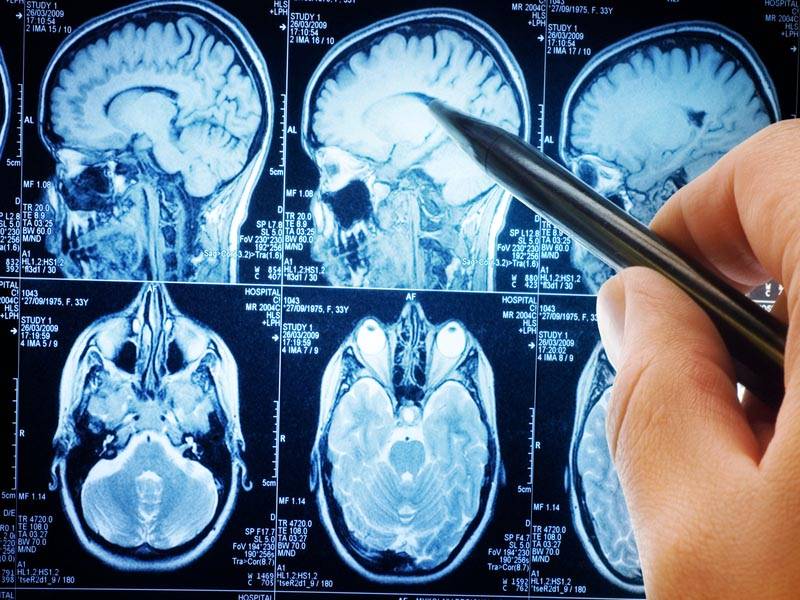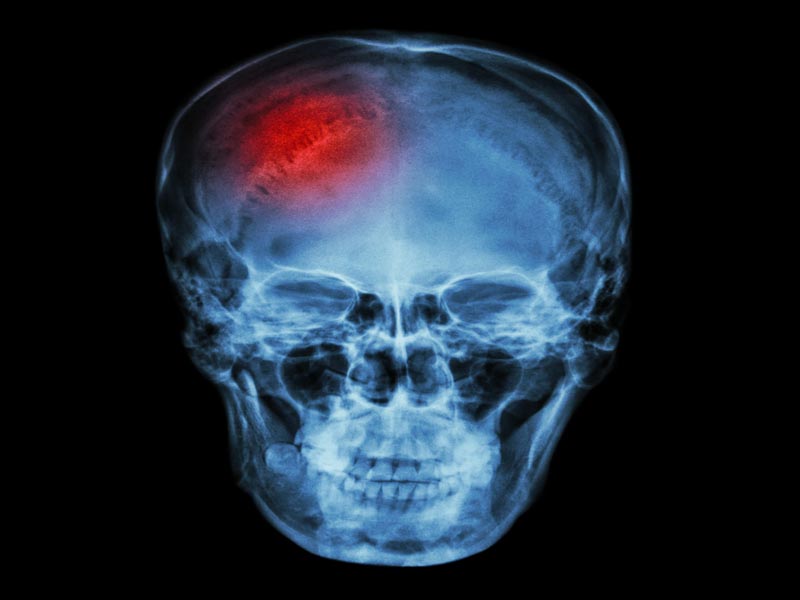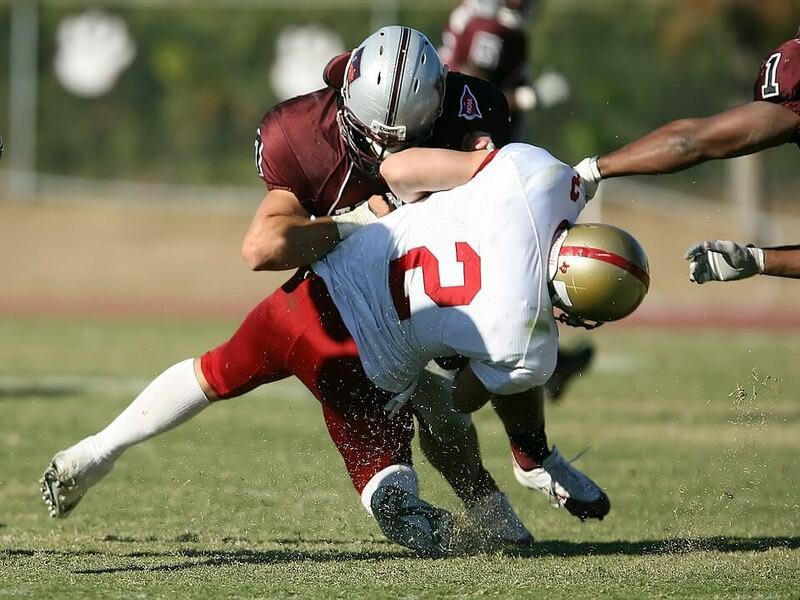How much do you really know about concussions? If you have kids or teens in sports or play contact sports yourself, you should have a good working knowledge of how concussions work and how they can impact your health and well-being. Since concussions tend to be misunderstood – and under-reported – the CDC recently launched a campaign designed to educate parents and athletes and ensure that any head injuries are promptly and properly assessed.
Even as far back as 2006, data shows that concussions are dramatically under-reported in youth sports. A study done that year found that youth ice hockey players considerably under-reported concussion; both coaches and the players themselves were unable to accurately detect concussion unless loss of consciousness occurred.
More than a decade later, we’re not faring any better. A research study of young female athletes in 2016 found that a full third failed to report concussion symptoms or seek out treatment. Lack of education for teen athletes, parents and coaches was found to play a significant role in the underreporting of injury. The ongoing concern about under-reporting means we know there are more concussions each year than are actually listed in the annual figures.
In this case, what you don’t know about concussions could hurt you or your child. So, MyBrainDR wants to help you understand the myths and facts about concussions.
10 Concussion Myths Busted
Myth 1: A concussion only happens if you lose consciousness.
Fact: You do not have to lose consciousness to have a concussion; people who are struck in the head or fall and do not lose consciousness account for many of the unreported concussions each year, according to the CDC.
Consider loss of consciousness to be a clear sign of concussion, but not the only one. Any injury to the head or fall needs to be examined by a doctor and evaluated based on the most recent CDC guidelines to prevent lasting damage.
Myth 2: If you are tough enough, you can ignore an injury and keep going.
Fact: This is the exact opposite of what you should do if you have a concussion. Neglecting to rest and get treatment is the worst thing you could do for your brain health and not a sign of toughness. Much of the recent “HeadsUp” campaign coordinated by the CDC is focused on educating coaches and players and moving them away from this toxic and dangerous mindset.
Myth 3: Only football players get concussions.
Fact: Concussions occur in any sport, at any time. According to the American Association of Neurological Surgeons, almost 2,000 cheerleaders sustain concussions a year. Most of these injuries happen during stunts and concussion accounts for a third of all cheerleading injuries.
Boxing, wrestling, ice hockey (both men’s and women’s), soccer and basketball also account for a significant number of concussions each year. While football players still make up the majority of concussion injuries, the number of divers, gymnasts, skaters and other team players is staggering.
Myth 4: You have to play a team or contact sport to get a concussion.
Fact: Team sports are a significant source of concussion, but auto accidents, slips and falls and bicycle accidents also cause traumatic brain injuries (TBI), resulting in thousands of concussions each year. Accidents while biking are highest in the under-14 age group but can happen to even casual riders. Kids who are not wearing helmets face greater risk than cyclists who opt for properly fitting helmets; helmetless children are 14 times more likely to receive a serious or fatal head injury during a bicycle accident. Any blow to the head or face should be considered suspect and examined by a medical professional, just in case.
Myth 5: You can’t get a concussion if you wear a helmet.
Fact: Most football and baseball related concussions occur during actual game play, not practice – so players are wearing helmets. Despite full-time and ongoing helmet use, football players have more concussion-related damage than athletes in any other sport. A helmet can help protect the head and face but it does not guarantee concussion prevention.
Myth 6: A person with a concussion should not be allowed to sleep for more than 15 minutes at a time.
Fact: Waking someone with a concussion every 20 or 30 minutes will actually prevent them from getting the rest they need. Since rest is a significant part of recovery, waking up the injured person could actually prevent them from healing. Your doctor may recommend waking your child every few hours to check on them during the very first night after a concussion, but every 15 or 20 minutes won’t benefit either of you.
Myth 7: You just have to suffer through any pain when you have a concussion.
Fact: While you should avoid alcohol or narcotics, simple over the counter pain relievers and NSAIDS like Ibuprofen and Acetaminophen can alleviate discomfort during this time. As always, follow the specific instructions given by your healthcare provider, but there is no need to suffer discomfort as you heal. A fall or contact significant enough to cause a concussion will likely leave you feeling sore in other places too, so an OTC pain reliever can help with those injuries as well.
Should concussion symptoms persist, check with your healthcare provider about potential changes to treatment. For decades, FDA-approved neurofeedback therapy has helped eliminate or reduce symptoms associated with concussions and this drug-free treatment may be a more effective option.
Myth 8: It is safe to use an iPad or other device as you recover.
Fact: It is tempting to hand over a device or increase screen time for a child that needs to rest, but researchers at the Children’s Hospital of Philadelphia reveal that electronics and screen time can significantly delay concussion recovery. Put the devices away and play a game, read aloud or chat instead of relying on video games or television for entertainment if you want a speedy recovery.
Myth 9: You can tell if you have had a concussion.
Fact: One of the symptoms of a concussion is confusion or even a reduction in cognitive function; someone in this state is not able to reliably assess their own condition. A medical professional or a coach educated in concussion guidelines is a more reliable witness in this case and less likely to have impaired judgment. Comparing post-concussion ability tests and brain scans to baseline, or prior, tests and scans will help the doctor more accurately evaluate the likelihood of and damage from a concussion.
Myth 10: A concussion is just a minor injury.
Fact: A concussion can cause significant and lasting damage to the brain. From memory loss to a reduction in cognitive ability, even a single concussion can have lasting impact. Of all the myths on our list, this one may be the most dangerous, as symptoms can linger long past the initial impact and need to be treated seriously.
You do not have to be a professional football player to get injured like one. New research suggests that a considerable number of student athletes sustain concussions every year. Since we are beginning to realize just how extensive the damage from concussion and CTE can be, the ability to recognize the true signs of concussion and erring on the side of caution could prevent problems for athletes of all ages.
It is not too late. Damage done by a concussion can be diagnosed in a variety of ways, and baseline testing can help identify injury in athletes of all ages. If you or your child has sustained a head injury in the past, even if they did not lose consciousness, a full assessment that includes a qEEG, or neurofeedback, brain scan can help determine the extent of the damage and allow you to address the problem in a timely manner. Contact MyBrainDR today to learn more about concussion and CTE and to set up a time to discover additional tools at your disposal. We’re here to help you heal or give you peace of mind about a recent or past injury.





